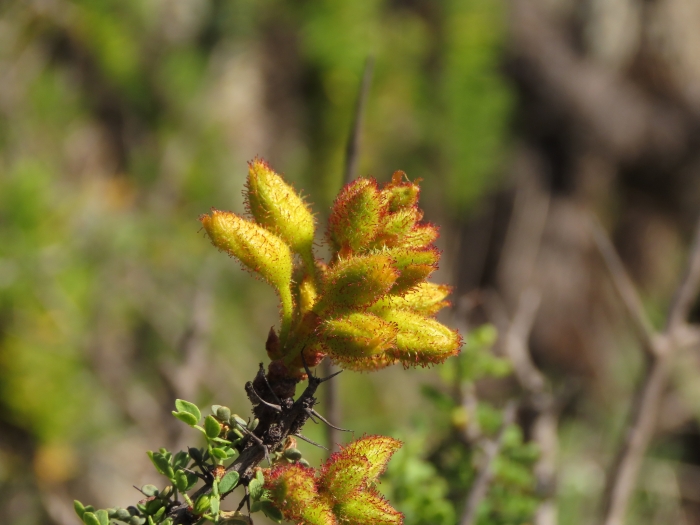Algarrobilla
(Balsamocarpon brevifolium)
Algarrobilla (Balsamocarpon brevifolium)
/
/

Nicolás Lavandero
CC BY 4.0
Image By:
Nicolás Lavandero
Recorded By:
Copyright:
CC BY 4.0
Copyright Notice:
Photo by: Nicolás Lavandero | License Type: CC BY 4.0 | License URL: http://creativecommons.org/licenses/by/4.0/ | Rights Holder: Nicolás Lavandero | Publisher: iNaturalist | Date Created: 2022-09-19T16:35:44-07:00 |












Estimated Native Range
Summary
Balsamocarpon brevifolium, commonly known as algarrobilla, is a perennial shrub native to the arid and semi-arid regions of northern and north-central Chile, particularly thriving in the Chilean matorral, a Mediterranean-type ecosystem characterized by sclerophyllous shrubs. It is a member of the Fabaceae family, within the Caesalpinioideae subfamily and Caesalpinieae tribe. Algarrobilla typically grows to a modest height of 1-2 meters and is adapted to survive in harsh, dry environments.
Algarrobilla is recognized for its resilience to drought conditions and its ability to fix nitrogen, improving soil fertility. The plant has small, tough leaves that help conserve water, and during the flowering season, it produces inconspicuous yellow flowers. Although not widely cultivated, it can be used in xeriscaping and as a soil improver in arid gardens. It requires minimal water once established, thrives in well-drained soils, and prefers full sun exposure. Algarrobilla is not commonly affected by diseases, but gardeners should be mindful of overwatering, which can lead to root rot.CC BY-SA 4.0
Algarrobilla is recognized for its resilience to drought conditions and its ability to fix nitrogen, improving soil fertility. The plant has small, tough leaves that help conserve water, and during the flowering season, it produces inconspicuous yellow flowers. Although not widely cultivated, it can be used in xeriscaping and as a soil improver in arid gardens. It requires minimal water once established, thrives in well-drained soils, and prefers full sun exposure. Algarrobilla is not commonly affected by diseases, but gardeners should be mindful of overwatering, which can lead to root rot.CC BY-SA 4.0
Plant Description
- Plant Type: Shrub
- Height: 0.5-1 feet
- Width: 1-2 feet
- Growth Rate: Slow
- Flower Color: Yellow
- Flowering Season: Summer
- Leaf Retention: Deciduous
Growth Requirements
- Sun: Full Sun
- Water: Very Low
- Drainage: Fast
Common Uses
Drought Tolerant, Low Maintenance, Rock Garden
Natural Habitat
Native to the Chilean matorral in northern and north-central Chile
Other Names
Common Names:
Scientific Names: , Balsamocarpon brevifolium, Caesalpinia brevifolia, Caesalpinia brevifolia, Sophora microphylla, Zuccagnia microphylla,
GBIF Accepted Name: